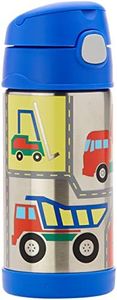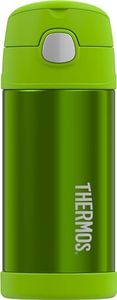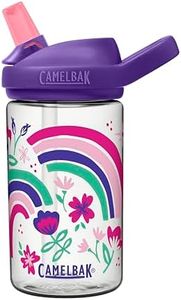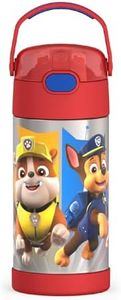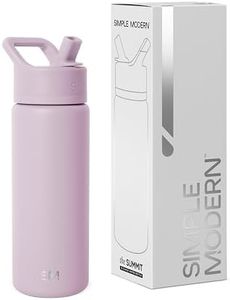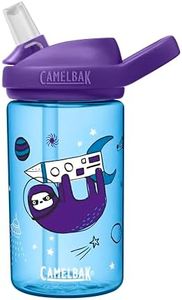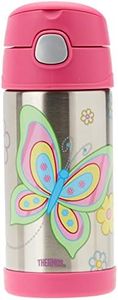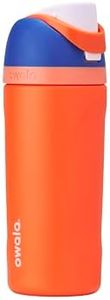We Use CookiesWe use cookies to enhance the security, performance,
functionality and for analytical and promotional activities. By continuing to browse this site you
are agreeing to our privacy policy
10 Best Water Bottle For Kids
From leading brands and best sellers available on the web.Buying Guide for the Best Water Bottle For Kids
Choosing the right water bottle for kids goes a long way in encouraging them to stay hydrated and making your life as a parent or caregiver easier. The right bottle is not only safe and comfortable for tiny hands but also convenient to use, clean, and carry around. To make the best choice, focus on aspects that matter most for children: safety, ease of use, maintenance, and suitability for their age and daily activities.MaterialMaterial refers to what the water bottle is made from, such as plastic, stainless steel, or glass. This is important because it affects safety, durability, weight, and ease of cleaning. Plastic bottles are lightweight but make sure they are BPA-free and food-grade for safety. Stainless steel bottles are very durable, often insulated, and do not retain flavors, but they can be heavier for small children. Glass bottles do not retain flavors either, but are breakable and usually heavier, though many have rubber sleeves for protection. Choose material based on your child’s age and activity: younger children generally do best with safe plastics or stainless steel for lighter weight and durability, while older kids can handle heavier or glass bottles if closely supervised.
CapacityCapacity is the amount of liquid the bottle can hold, usually measured in milliliters or ounces. This matters because a bottle that's too small may require too many refills, while one that's too large could be heavy and difficult for a child to manage. Bottles under 350ml are well-suited for toddlers and short outings, medium bottles around 350-500ml are great for school-aged children and typical school days, and larger sizes are better for older kids who need to stay hydrated during sports or longer trips. Choose a size that your child can comfortably carry and manage, and that suits the length of their typical activities.
Lid Type and Drinking MechanismThis refers to how the bottle opens and the way your child drinks from it, such as spout, straw, flip-top, or screw-top lids. It's important because it affects ease of use, potential for spills, and hygiene. Very young children do best with a straw or spout design that is easy to sip and less likely to spill, while older kids can handle screw tops or flip-tops. Some lids come with locks or covers to keep the mouthpiece clean; this is useful in messy or outdoor settings. Choose based on your child's coordination and how, where, and when they will use the bottle.
Ease of CleaningEase of cleaning refers to how simple it is to wash the bottle thoroughly, which is important for hygiene and health. Bottles with wide mouths are generally easier to clean as you can reach inside, while some have removable parts that can be taken apart to clean. Dishwasher-safe bottles save effort, but always check the manufacturer guidelines. Pick bottles that you can easily and reliably clean, especially if you plan to use them for drinks other than water or send them to school.
Leak-Proof DesignA leak-proof bottle prevents spills in backpacks, lunchboxes, or your car. This is usually achieved by specific lid mechanisms or silicone seals. Leak-proofing is especially important for young children and for bottles that will be packed with other belongings. Check reviews or test at home to ensure the bottle doesn't leak in different positions. Select this feature if your kid will carry the bottle to school, picnics, or sports.
InsulationInsulation keeps drinks cold or hot for longer periods. Double-walled bottles maintain temperature better, which is helpful during hot weather to keep water cool. This makes drinking more appealing for kids. Non-insulated bottles are lighter and generally fine for quick outings or when temperature is not a concern. Pick insulated bottles for children who spend a lot of time outdoors or at sports practice; otherwise, non-insulated is usually sufficient.
Size and ShapeThe overall size and shape affect how easy the bottle is for your child to hold and carry. Some bottles feature a slim body or a curved shape for small hands. Handles or carrying straps make them easier for kids to manage, especially for younger ones. Tall, thin bottles fit backpack pockets, while wider bottles may be sturdier but heavier. Choose a shape and size that fits your child's grip and the type of bag or cup holder they use.
